Belyany: perhaps the most unique river vessels in the world
Categories: History
By Pictolic https://pictolic.com/article/belyany-perhaps-the-most-unique-river-vessels-in-the-world.htmlIf you ask what the belyans are, then few will answer this question. But only some 100 years ago, these giant ships sailed along the Volga and Vetluga. Belyany is perhaps the most unique river vessels in the world. These were huge even by the current standards of the court. According to some sources, there were belyans up to 120 meters long. The height of the side could reach 6 meters.
Let's find out what was their uniqueness…
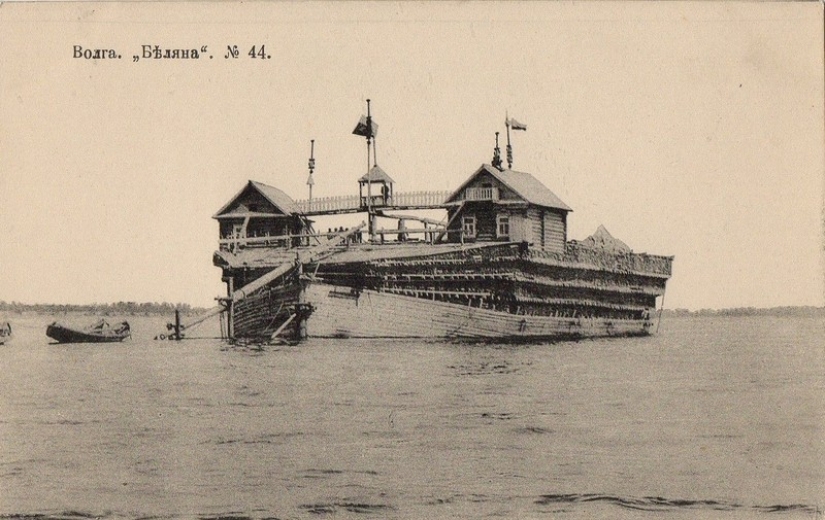
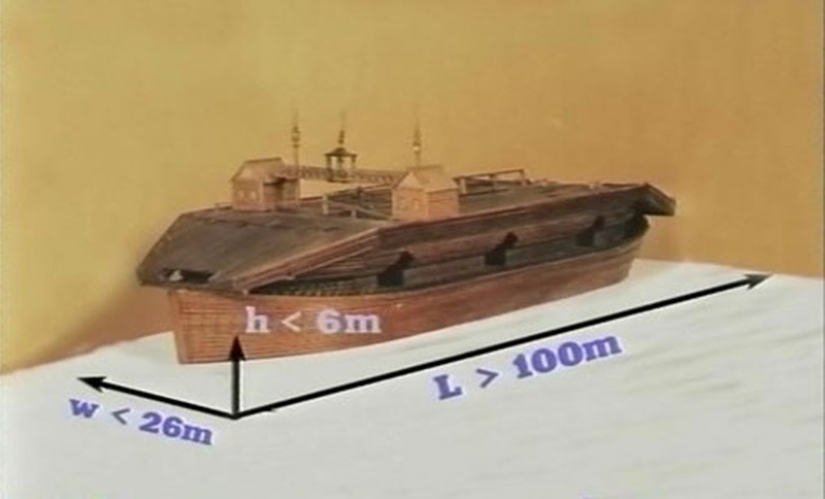
A long time ago, even before the revolution, every spring, as soon as the Vetluga was opened from the ice, the inhabitants of the coastal villages watched with fascination the majestic snow-white structures that slowly passed along the river.
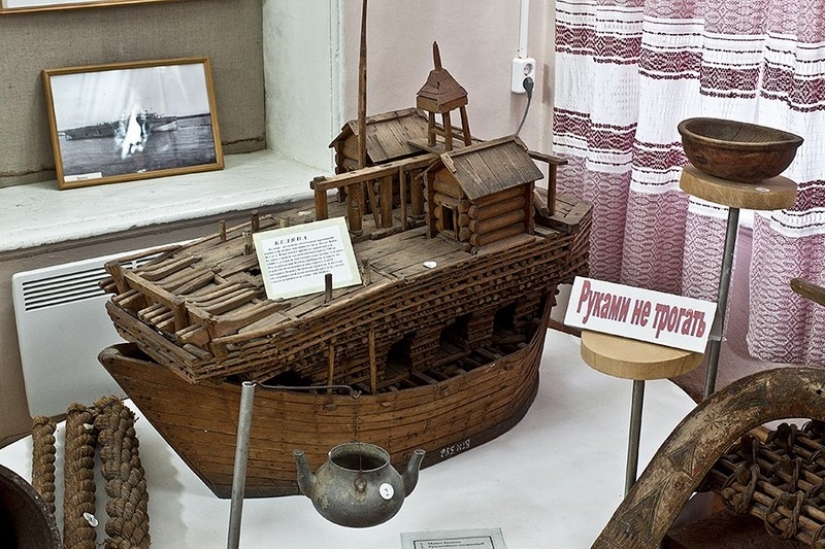
They were called "white people" - white, then. Unlike rafts and soymas, they were loaded only with processed," white " wood — that's why they were considered more valuable and expensive.
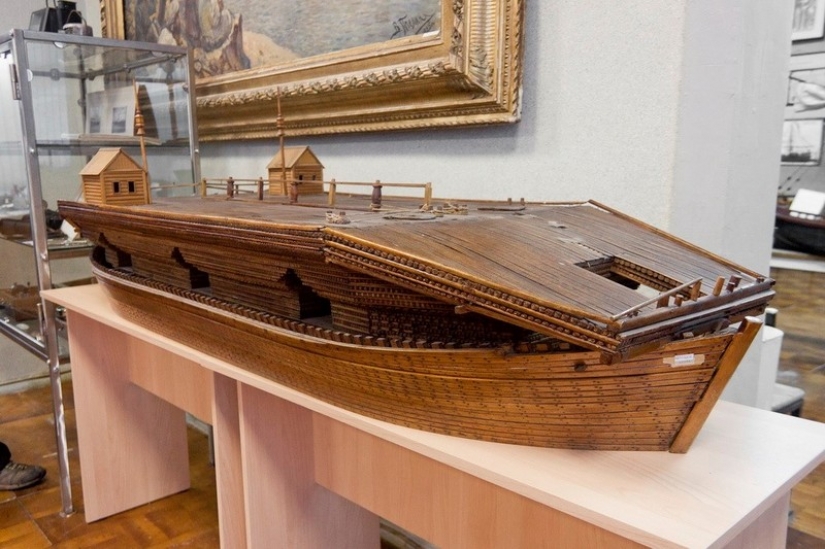
Irina Sergeevna Korina, director of the local History Museum of the Krasnobakovsky district, believes that the beginning of shipbuilding was laid in the XVII century, when after the Streletsky riot of 1698, the families of Streltsy, as well as the guilty shipwrights, were exiled to Vetluga and its tributary Ust.

There were a great many varieties of river vessels at one time: goose boats, podchalki, polulodki, ferries, barges… Shipbuilding was considered prestigious and profitable: before the appearance of the Among the available railways and highways, the river was the fastest and cheapest way to transport passengers and cargo. Depending on the characteristics of the river, certain types of vessels were popular on it.
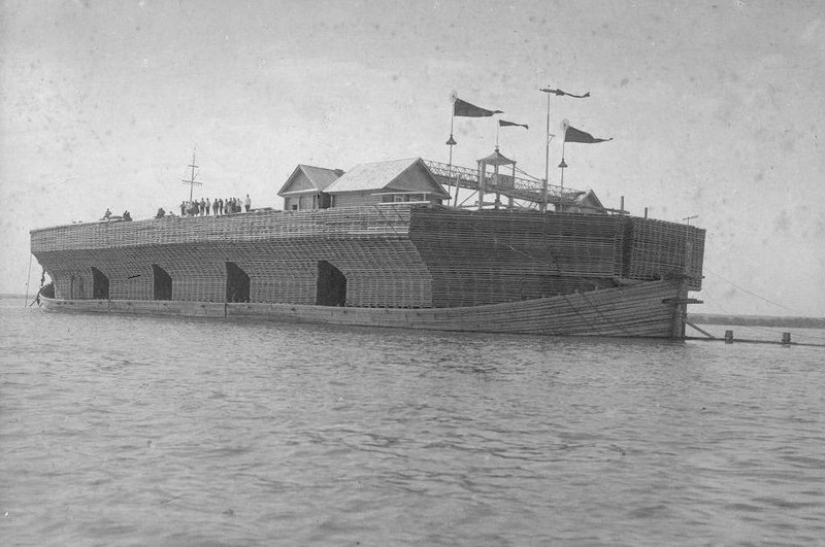
Vetluga became famous for the Belyans. They were built only at three shipyards, one of which was the Bakovskaya.
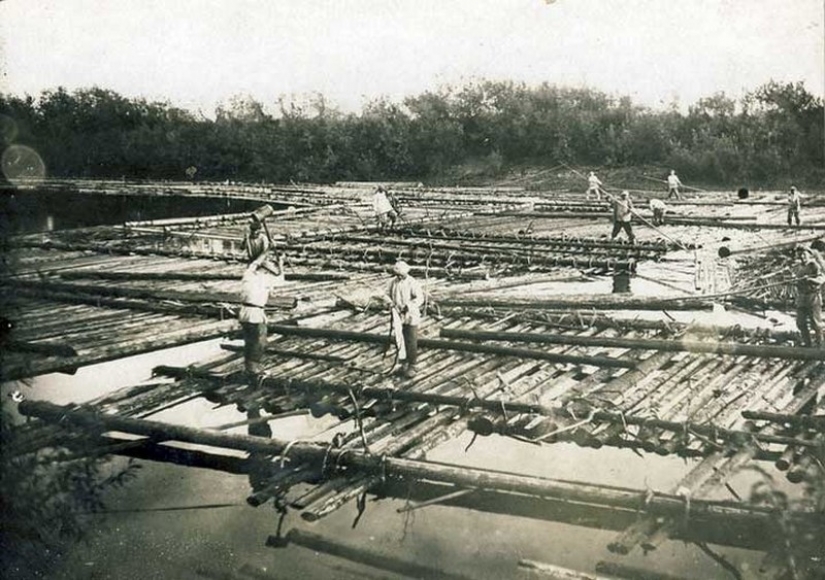
...It was a beautiful sight-the majestic belyana walking along the blue Vetluzhsky waters. Not everyone, probably, thought about the cost of what incredible work this beauty was created. The work of rafters could be compared with hard labor, with the only difference that hard labor is forced labor.
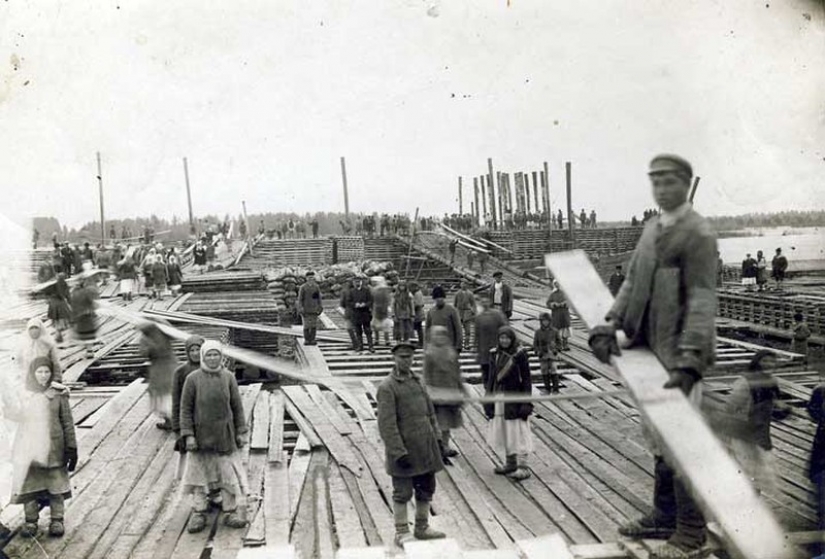
The carrying capacity of the belyan corresponded to their size and could be 100-150 thousand pounds (pud-16 kg) for small belyan, but for large ones it reached up to 800 thousand pounds! That is, they were the size of a small, but still an ocean-going ship, although they sailed exclusively from the upper reaches to the lower reaches of the Volga and never went further than Astrakhan!
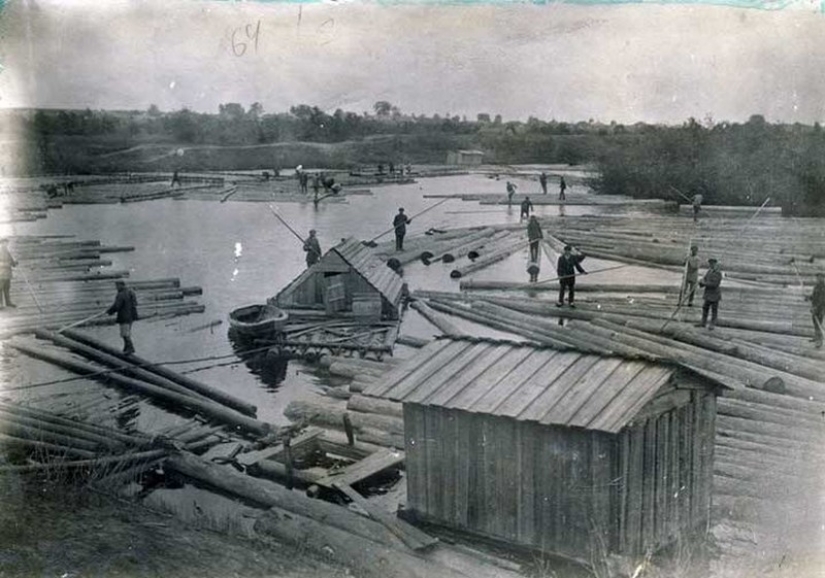
Logging and rafting of the forest were carried out in barbaric ways in the absence of any mechanization. The workers went to cut down the forest diligently, taking food with them from home. They lived in the forest, not being at home for three or four months, being content with a meager and monotonous diet, spending the night in small winter huts that did not keep the heat well.
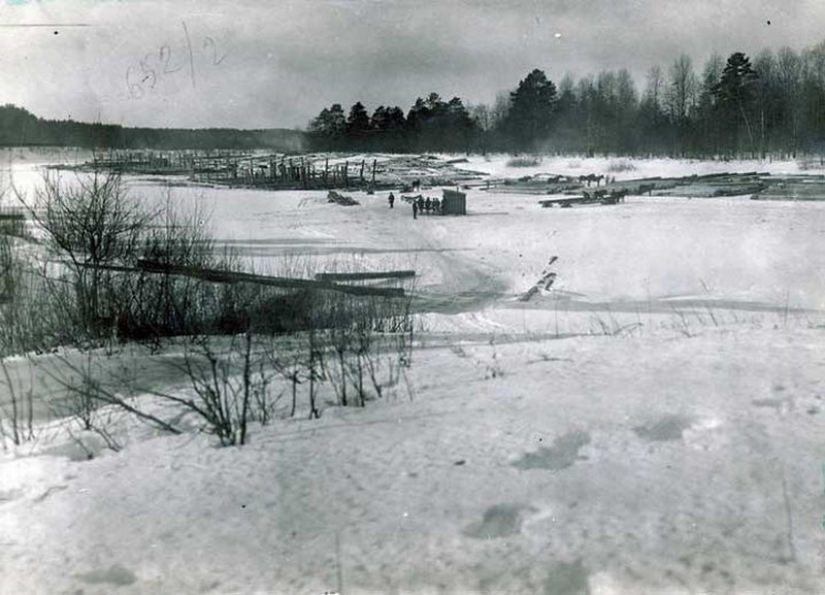
The felled forest had to be dragged to the floating river (a tributary of the Vetluga). Here the logs were tied into links and, when the flood began, they were driven to Vetluga (to the mouth of the floating river). This was done with the use of long poles, which dragged the tied logs from the banks, so that there was no congestion, and some brave fellows sat on small rafts and dashed to the mouth of the river on fast water, directing the movement of the floating forest.
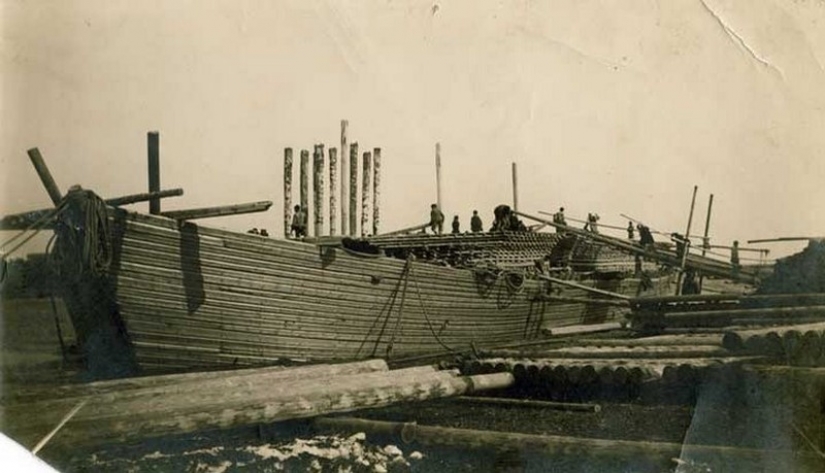
Despite the fact that the work of a boatman was very dangerous, sometimes threatening loss of health and even death, people came here, since this work was, although meager, but a help in peasant life. Women also worked at the Belyans, but their work was paid much lower. Therefore, they rafted in rare cases, only when the whole family served the raft.
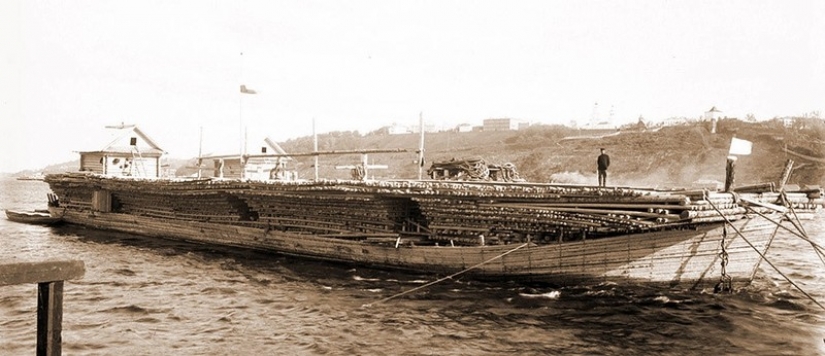
The forest in Belyan was laid in a special way — in even rows with wide openings, so that in case of an accident it was possible to quickly get to the place of failure. In addition, properly laid logs dried faster, which kept them from rotting.
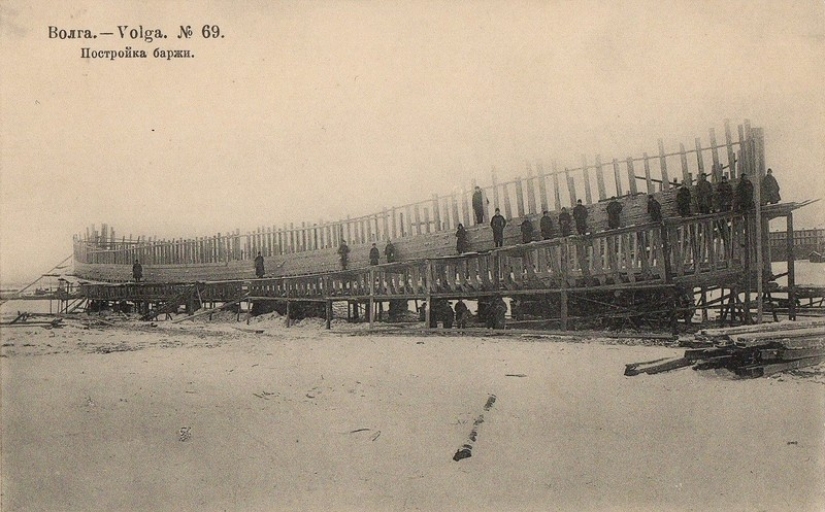
It is known that about 240 pine logs and 200 spruce logs were spent on the construction of one middle Volga belyana. At the same time, the flat bottom was made of spruce beams, and the sides were made of pine. The distance between the frames is no more than half a meter, which is why the strength of the belyana hull was exceptionally great. At the same time, as it very often happened in the past, belyans were built at first without a single nail, and only later they began to be hammered together with iron nails.
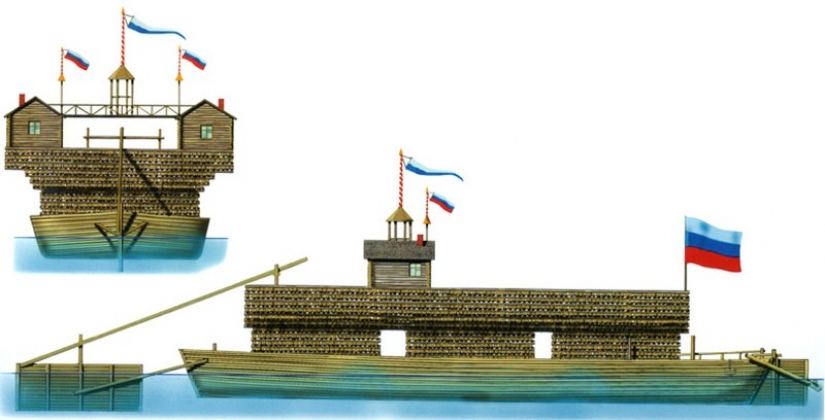
But the most interesting thing about belyan was, in general, its cargo — "white forest", that is, white-yellow logs stripped of bark. It is believed that this is why it was called that way, although there is another point of view, as if the word "belyana" is connected with the Belaya River. In any case, all the belyans were always white, since these ships served only one navigation and therefore never tarred!
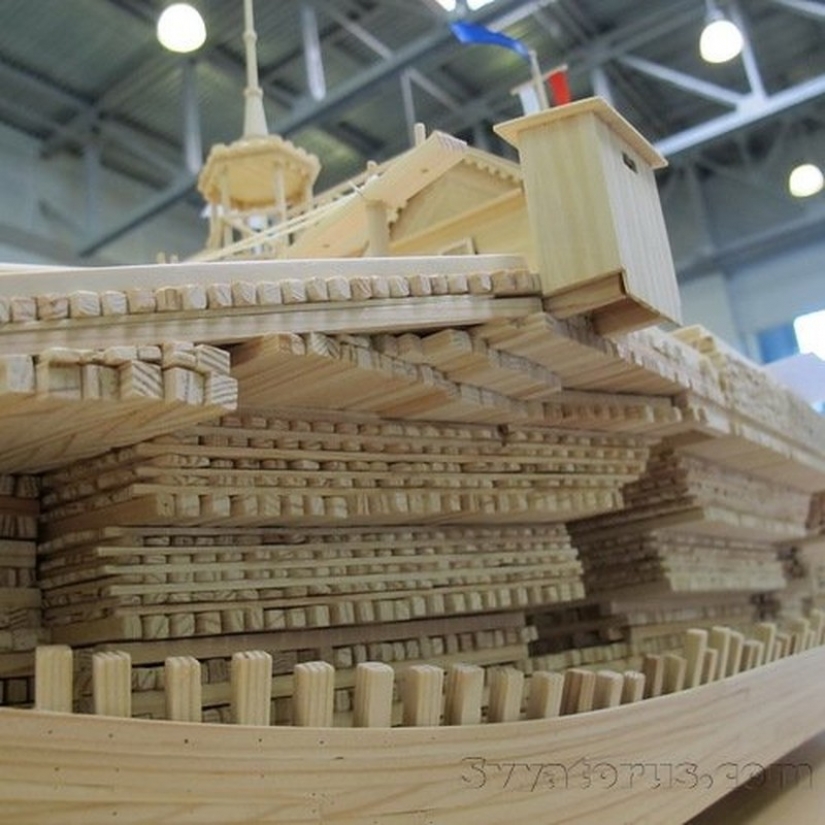
One of the last Belyan, the beginning of the 20th century.
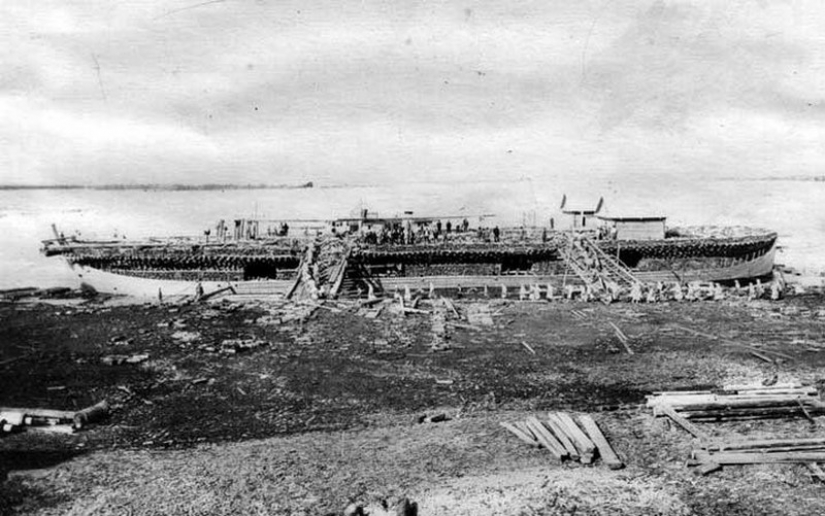
At the same time, as soon as the forest began to exceed the height of the sides of the belyan, the logs began to be laid so that they protruded over the sides, and a new load was placed on them. Such protrusions were called dismissals or spacings, and they had to be able to position them so as not to disturb the balance of the vessel. At the same time, the dissolves sometimes protruded overboard by four or more meters to the sides, so that the width of the vessel at the top turned out to be much larger than at the bottom, and reached 30 meters for some Belyans!
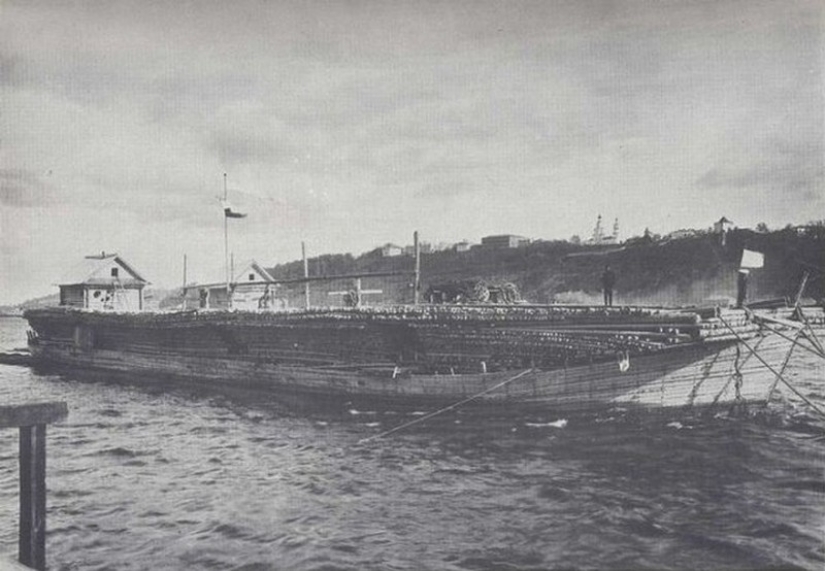
The body of the belyana was pointed both in front and behind, and it was controlled with the help of a huge rudder — lot, which looked like a real plank gate. He turned with the help of a huge long log, brought from the stern to the deck. Because of this, Lota belyana rafted down the river not with her nose, but with her stern. From time to time, moving the huge lot like a lazy whale's tail, she swam so with the current, but, despite all her clumsiness, she had excellent maneuverability! In addition to the lot, there were large and small anchors on belyan weighing from 20 to 100 pounds, as well as a great variety of various ropes, hemp and mochal.
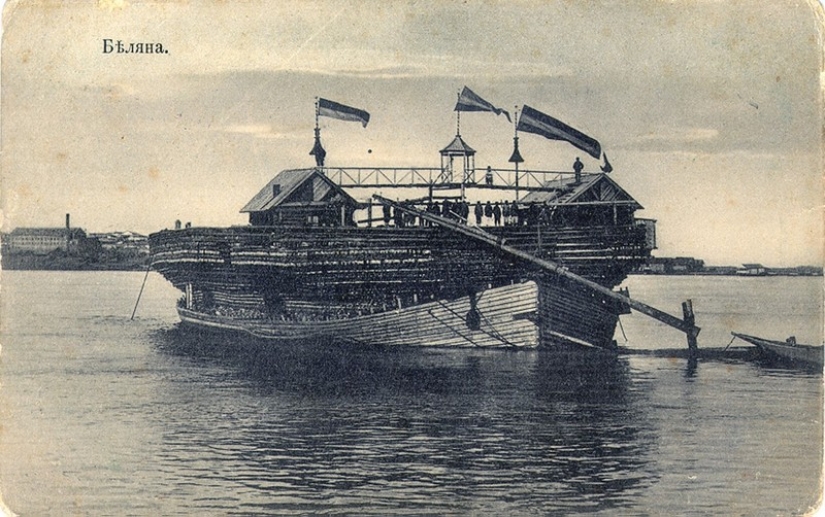
It is interesting that the belyana deck was also nothing more than a cargo, and it was laid either from a board or from sawn boards and was so large that it resembled the deck of a modern aircraft carrier. 2-4 gates were placed on it for lifting large anchors and pulling the ropes holding the lot. But closer to the stern on belyan, for the sake of balance, two small huts were installed — "kazenki", which served as a habitat for the ship's crew. Between the roofs of the huts there was a high cross bridge with a carved booth in the middle, in which the pilot was located.
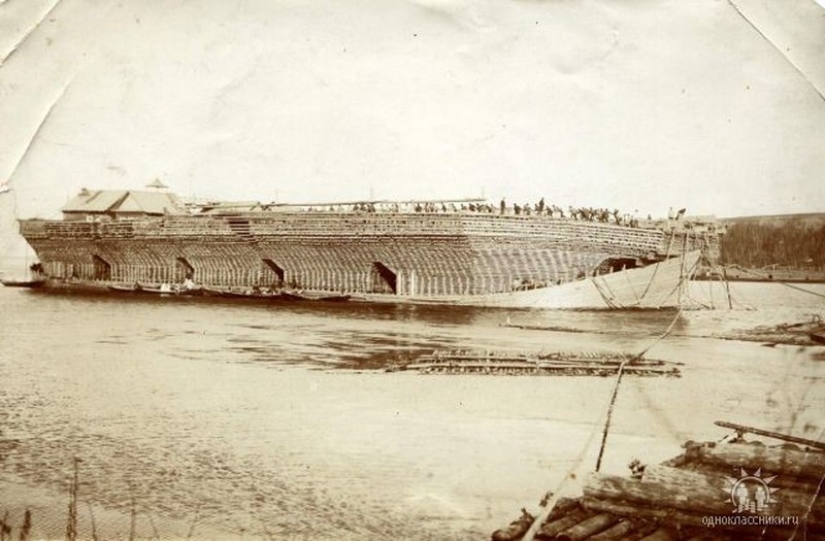
At the same time, the booth was all covered with carvings, and sometimes even painted with paint "like gold". Although this vessel was purely functional, the belyans were nevertheless richly decorated with flags, not only state and commercial flags, but also the merchant's own flags, which most often depicted blessing saints or some appropriate symbols for the occasion. These flags were sometimes so large that they fluttered over the white people like sails. But merchants usually did not consider spending on them, because the main thing here was to declare themselves!

There were from 15 to 35 workers on Belyan, and from 60 to 80 on the largest ones. Many of them worked on pumps that pumped water out of the hull, and there were 10-12 such pumps, since the belyana hull always leaked a little. Because of this, belyana was loaded so that her nose sank deeper into the water than the stern, and all the water flowed there!
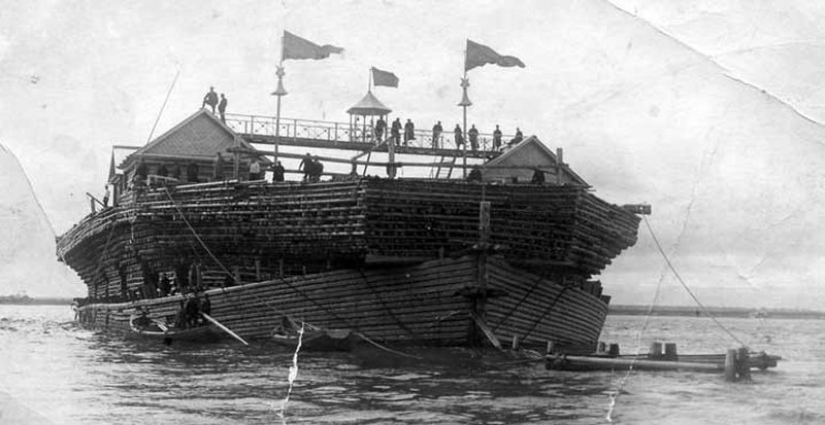
The construction of Belyan on the Volga reached a special heyday in the middle of the XIX century in connection with the beginning of mass steamship traffic. Since the steamers at that time were running on firewood (and there were about 500 of them), it is not difficult to imagine what a huge amount of wood this entire fleet required.
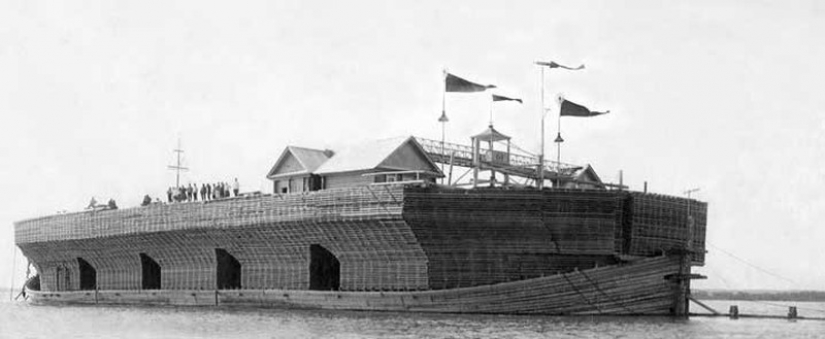
Firewood was imported to the Volga ports exclusively on the Belyans, and only gradually, due to the transition to oil, the demand for firewood on the Volga fell. Nevertheless, even at the end of the XIX century, they continued to build up to 150 pieces here annually and, after loading with wood, they were floated down the river up to Astrakhan.

Then these unique vessels were disassembled, so much so that there was literally nothing left of them! "Kazenki" were sold as ready-made huts, the forest was used for building material, hemp, matting and ropes, not to mention fasteners — absolutely everything brought income to the owners of belyan! Only small belyans, loaded with fish in Astrakhan, went back, drawn by boatmen. However, then they were also dismantled and sold for firewood. It turned out to be unprofitable to keep belyana afloat for more than one season!
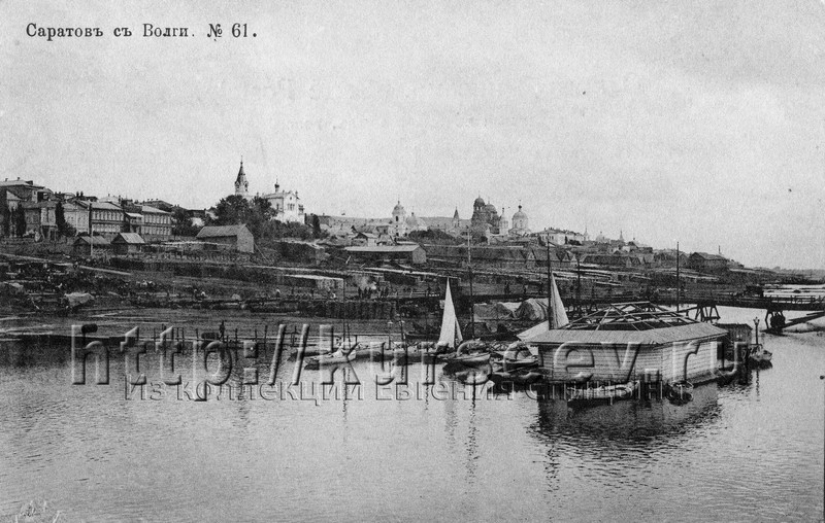
The history of the Belyans is also interesting because some of them were assembled and sorted out twice in one navigation! So, for example, small belyany in the place where the Volga came close to They were moored to the shore, after which all the cargo from them was transported by horse-drawn carts to the Don. After that, the belyans themselves were disassembled, carried after the cargo, they were reassembled and loaded at a new place. Now the forest was rafted on them to the lower reaches of the Don, where the belyans were sorted out for the second time!
Recent articles

Jacques-Henri Lartigue (1894-1986) is perhaps the most famous "amateur" in the history of photography. The art world discovered his ...

It turns out that an active lifestyle is useful not only for the body but for the brain. Exercise strengthens muscles and spirit, ...
Related articles

Without exception, all residents of Russia, traveling to our vast country, met the strange names of towns, cities and rivers. What ...

Stories about ancient treasures fascinate not only romantic teenagers, but also adults. Treasure hunting can take a lot of time and ...

Cruise on huge white liner — blue dream for many. Stay at the highest level, stunning scenery, bright sun and blue wave — what ...

Most major companies profanity is not encouraged. It is considered that the profanity — it is a sign of disrespect for ...